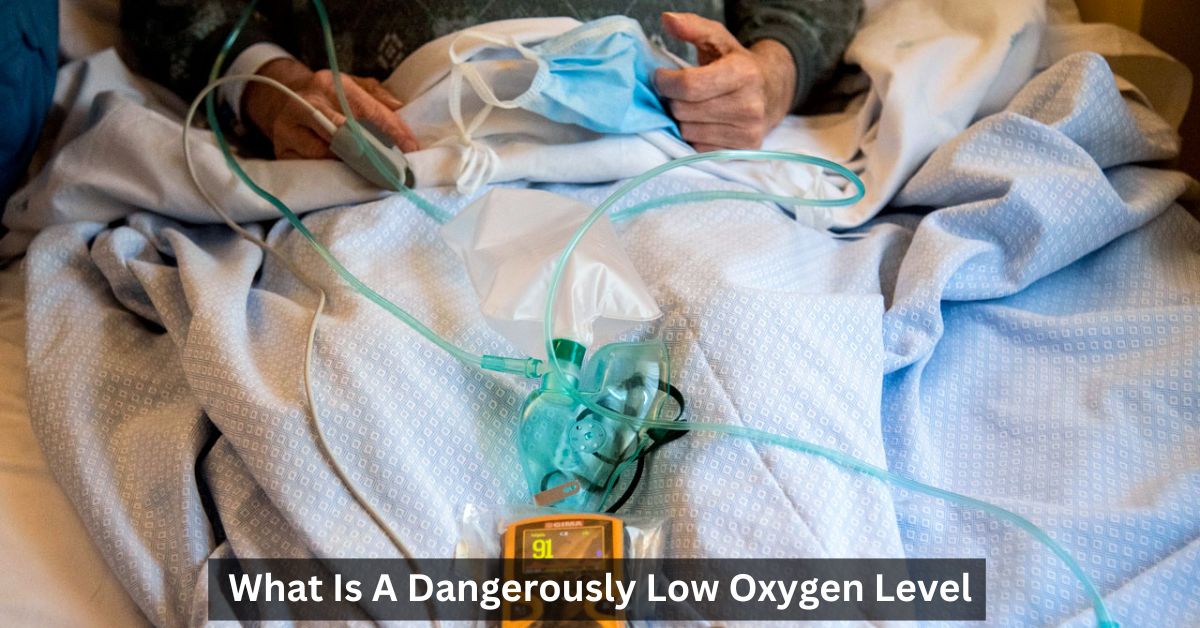
Imagine a world without air—a desolate realm where every breath becomes a battle for survival. In this oxygen-deprived reality, our bodies struggle to function, gasping for the life-giving element that keeps us alive. This is the essence of dangerously low oxygen levels, a perilous state where the very foundation of our existence hangs in the balance.
In this article, we embark on a journey deep into the realms of hypoxemia, uncovering its secrets, unraveling its consequences, and shedding light on the measures we can take to conquer this silent threat. So, brace yourself for an exploration of the delicate dance between life and the absence of breath—a dance where knowledge becomes our most potent weapon.
Causes Of Low Oxygen Levels: What You Need To Know
Several factors can contribute to dangerously low oxygen levels. Some common causes include:
Lung Diseases:
Conditions like chronic obstructive pulmonary disease (COPD), pneumonia, asthma, and pulmonary fibrosis can impair lung function and result in decreased oxygen levels.
Heart Conditions:
Certain heart diseases, such as congestive heart failure or coronary artery disease, can limit the heart’s ability to pump oxygen-rich blood to the body.
Altitude Changes:
Rapid changes in altitude, especially at high altitudes, can cause a decrease in oxygen levels due to lower air pressure.
Anemia:
A low red blood cell count or reduced hemoglobin levels can affect the blood’s ability to carry oxygen effectively.
Environmental Factors: Exposure to environments with low oxygen levels, such as confined spaces or high levels of pollutants, can lead to hypoxemia.
Symptoms Of Low Oxygen Level
The symptoms of dangerously low oxygen levels may vary depending on the severity of the condition. Common symptoms include:
- Shortness of breath
- Rapid breathing
- Wheezing
- Chest pain or tightness
- Confusion or disorientation
- Bluish tint on the skin, lips, or nail beds (cyanosis)
- Rapid heart rate
Diagnosis Of Low Oxygen Level
Diagnosing dangerously low oxygen levels typically involves a combination of medical history evaluation, physical examination, and specific tests. Healthcare professionals may use the following methods:
Pulse Oximetry: A non-invasive test that measures oxygen saturation levels in the blood using a device called a pulse oximeter.
Arterial Blood Gas (ABG) Test: A blood test that measures the oxygen and carbon dioxide levels in arterial blood.
Lung Function Tests: These tests assess lung capacity and function, helping identify underlying respiratory conditions.
Imaging Tests: X-rays, CT scans, or other imaging techniques may be used to evaluate lung and heart health.
Treatment Of Low Oxygen Level
The treatment of dangerously low oxygen levels depends on the underlying cause and the severity of the condition. Some common treatment approaches include:
Oxygen Therapy: Supplemental oxygen is provided through nasal prongs, masks, or ventilators to increase oxygen levels in the blood.
Medications: Depending on the underlying condition, medications such as bronchodilators, antibiotics, or diuretics may be prescribed.
Pulmonary Rehabilitation: This comprehensive program includes exercise, breathing techniques, and education to improve lung function and overall well-being.
Surgical Interventions: In some cases, surgical procedures may be necessary to address underlying conditions, such as lung or heart surgeries.
Also Read : How Much Higher Do Wrist Blood Pressure Monitors Read?
Prevention Of Low-Level Oxygen
While not all causes of dangerously low oxygen levels can be prevented, there are measures that can reduce the risk. Consider the following preventive measures:
Quit Smoking: Smoking damages the lungs and increases the risk of respiratory conditions. Quitting smoking is crucial for maintaining lung health.
Maintain a Healthy Lifestyle: Regular exercise, a balanced diet, and adequate hydration contribute to overall health and lung function.
Avoid Environmental Hazards: Minimize exposure to pollutants, chemicals, and low-oxygen environments whenever possible.
Vaccinations: Stay up-to-date with vaccinations, including those for pneumonia and influenza, to prevent respiratory infections.
Complications
Untreated or prolonged dangerously low oxygen levels can lead to severe complications, including:
- Organ damage or failure
- Cognitive impairments
- Cardiac arrhythmias
- Pulmonary hypertension
- Decreased exercise tolerance
- Reduced quality of life
Risk Factors
Several factors increase the risk of experiencing dangerously low oxygen levels:
- Age: Older adults and infants are more vulnerable.
- Chronic Health Conditions: Pre-existing lung or heart diseases increase the risk.
- Smoking: Smoking damages the lungs and elevates the risk of hypoxemia.
- Obesity: Excess weight can affect lung function and oxygen uptake.
- Environmental Exposure: Occupations with exposure to pollutants or low-oxygen environments pose a higher risk.
Emergency Care
If you or someone experiences severe symptoms of dangerously low oxygen levels, it is essential to seek emergency medical care immediately. Call emergency services or visit the nearest hospital to ensure prompt evaluation and treatment.
Conclusion
Dangerously low oxygen levels can significantly impact our health and well-being. Understanding the causes, symptoms, diagnosis, treatment, and prevention strategies is crucial for maintaining optimal oxygenation. By taking proactive measures, seeking appropriate medical care, and making lifestyle changes, we can reduce the risk and mitigate the potential complications associated with hypoxemia.
FAQs
Q: Can dangerously low oxygen levels be life-threatening?
A: Yes, significantly low oxygen levels can be life-threatening and require immediate medical attention.
Q: How is dangerously low oxygen levels different from shortness of breath?
A: Dangerously low oxygen levels refer to a condition where the amount of oxygen in the blood is below normal, while shortness of breath is a subjective feeling of difficulty in breathing.
Q: Can anxiety or panic attacks cause dangerously low oxygen levels?
A: Anxiety or panic attacks can cause hyperventilation, which can temporarily disrupt the balance of oxygen and carbon dioxide in the body. However, it typically does not result in dangerously low oxygen levels.
Q: Are there any long-term effects of hypoxemia?
A: Prolonged or untreated hypoxemia can lead to organ damage, cognitive impairments, cardiac arrhythmias, and reduced exercise tolerance.
Q: Is dangerously low oxygen levels reversible?
A: The reversibility of dangerously low oxygen levels depends on the underlying cause. Prompt medical intervention and appropriate treatment can often improve oxygenation levels and alleviate symptoms.





